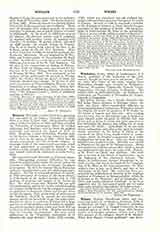

Winslow (WINSLOW), JAKOB BENIGNUS, physician and anatomist, b. at Odense, Denmark, April 27, 1669; d. in Paris, April 3, 1760. He finished his high-school studies at Odense in 1687, and then attended the University of Copenhagen, where he studied philosophy and theology; later he chose the medical profession and obtained the degree of B.M. in 1694. Receiving a royal scholarship, Winslow went for his further training to foreign countries in 1697, and to Paris in the spring of 1698. While here he became acquainted with the Catholic religion. A thorough study of the controverted questions, which he had undertaken to strengthen himself in the Lutheran faith, brought him into the Church. Bossuet himself received his confession of faith, October 8, 1699.
His conversion made his return to Denmark impossible. Disregarding economic difficulties he continued his medical studies under Duverney, and in the autumn of 1704 received, free of expense, the degree of licentiate. In 1711 he married Maria Catharina Gilles, by whom he had a son, who died young, and a daughter. In 1721 he was made professor of surgery, in 1723 interpreter of German at the royal library, in 1728 regent of the medical faculty, and in 1743 professor of anatomy and surgery at the Jardin du Roi. The chief reason why Winslow did not gain this professorship until so late in life, notwithstanding his eminent qualifications, was his outspoken opinions in opposition to Jansenism, which had brought down on him the enmity of the entire body of professors at the Sorbonne. In 1745 he opened the anatomical theatre, which had been built under his supervision. Besides his duties as professor, Winslow had a large practice at several hospitals and, in addition, number-less private patients, among whom was Louis XIV up to the time of his death in 1715. Winslow also found time for scientific investigations. His most noted publication is the “Exposition anatomique de la structure du corps humain” (Paris, 1732; London,1733), which was translated into all civilized languages, and spread his reputation throughout the whole of Europe. As early as 1708 he was made a member of the Academy of Sciences at Paris; later he became a member of the Academy at Berlin. On his grave-stone in Saint-Etienne du Mont is the inscription: “Ortu et genere nobilis, nobilior virtute et doctrina”.
PHILIPP VON KETTENBURG

